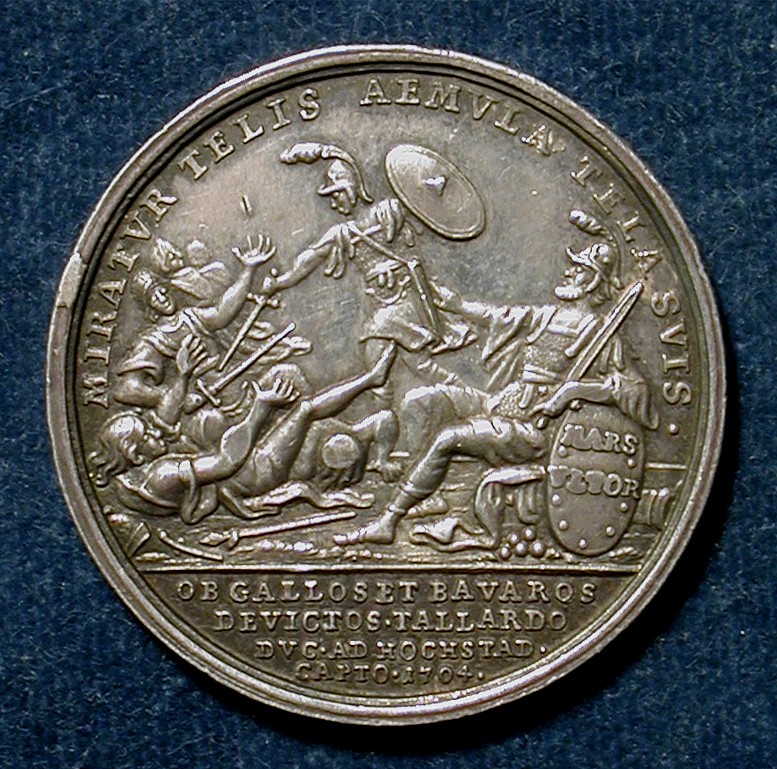|
BATTLE OF BLENHEIM, DUKE OF MARLBOROUGH HAUTSCH, Georg: England, 1704, Silver, 37
mm The Battle of Blenheim (also, Second Battle of Höchstädt), fought in 1704, was one of the most important of several battles of the War of the Spanish Succession (1701-1714). This war was fought among several European powers to prevent the unification of the most powerful states of Europe, the Kingdoms of Spain and France, under one Bourbon monarch. The war was fought primarily by forces supporting the unification, the Spanish loyal to Philip V, France, and the Electorate of Bavaria, against those opposing unification, the Spanish loyal to Archduke Charles, the Holy Roman Empire, Great Britain, the Dutch Republic, Portugal, and the Duchy of Savoy. These forces were known as the Two Crowns and Grand Alliance, respectively. Although the War of the Spanish Succession was fought primarily in Europe, where, besides the Blenheim, included the Battles of Oudenarde, Malplaquet, and Villaviciosa, it also had a North American component, the so-called Queen Anne's War (1702–1713), a series of French and Indian Wars fought between France and England for control of the North American continent. The War of the Spanish Succession ended with the treaties of Utrecht and Rastatt (Rastadt). By these treaties, Philip V remained King of Spain but was removed from the French line of succession, averting a union of the two kingdoms, and the Austrians gained most of the Spanish territories in Italy and the Netherlands, thus ending France's dominance over continental Europe. At the Battle of Blenheim, the forces under John, Duke of Marlborough, Commander-in Chief of the English Army decisively defeated those under duc de Tallard, Marshall of France, commander of the combined Franco-Bavarian army. This medal is one of four varieties by Hautsch commemorating the Battle of Blenheim. This variety is signed with an H in script. The others are signed with a star, the mark of Georg Hautsch. |
|

